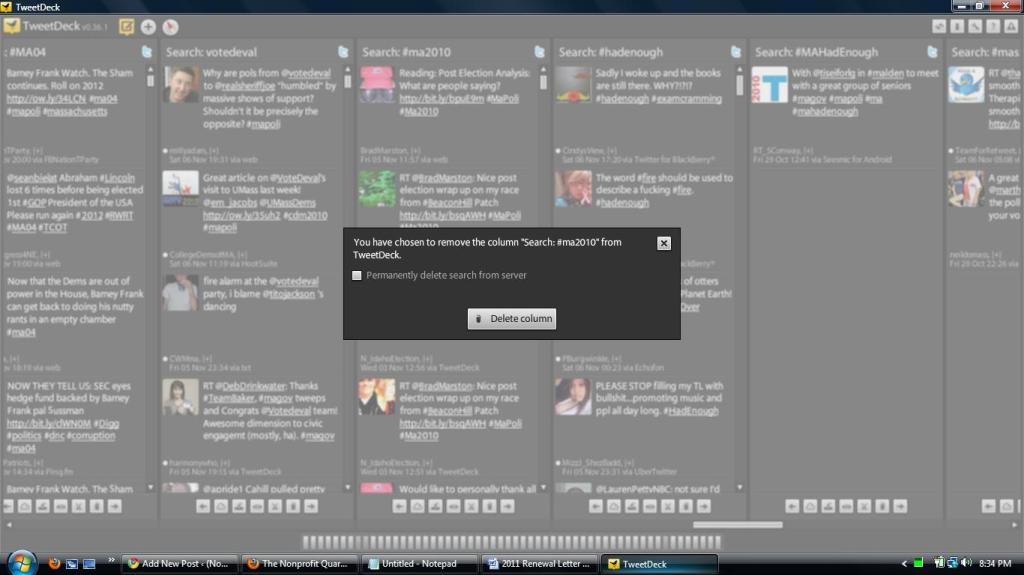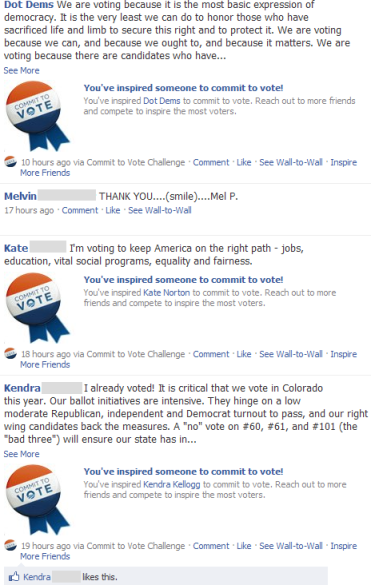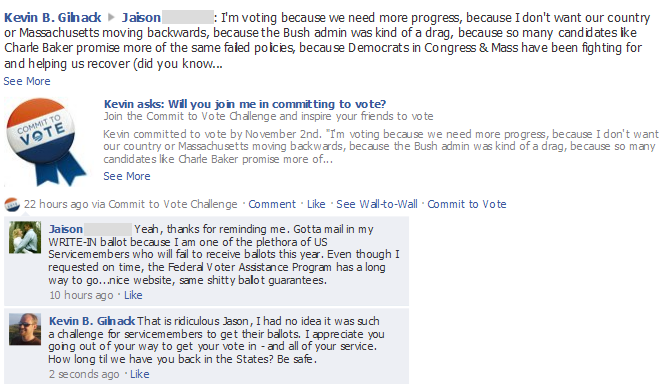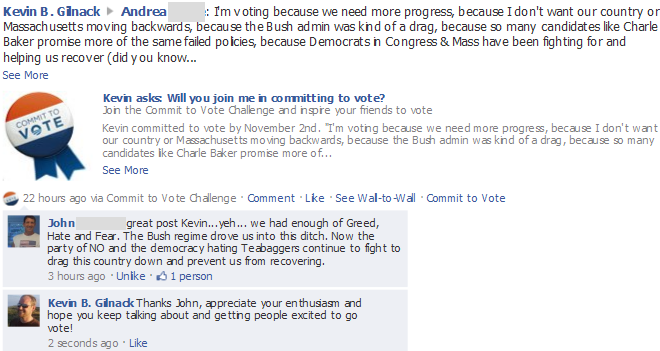I spent some time this evening getting reacquainted with the Obama Campaign’s Dashboard this evening, and I have to say it is loaded with features and seems much more robust than when I originally signed up.
With only three weeks to the election, now is the time to sign up, help spread the word, explore the features, start making calls, and help make sure we re-elect President Barack Obama and Vice President Joe Biden.
With that said, of course, there were also some functionalities that I’d love to see added to help increase sign-ups, add new features, and/or improve the user experience. While many of these requests are just something to put a pin in and work on for the next campaign, others seem like fairly minimal lifts that could be worth the effort.
These are just one obnoxious critic’s opinions, but check it out and let me know what you think.
- Groups enhancements:
- I had to hit “Load more items” four times to get to the Young Americans for Obama group. Dashboard should feature 3-4 of the most relevant Official Groups before going into the regional and other suggested groups based on perceived relevance. And since I’m a young American who had to go past many demographic-based groups that were not relevant to me, whatever algorithm determines relevance should be enhanced.
- There should be a more clear call to action besides “Invite Friends” to show what the point of being in groups is (e.g. attend an event, share a resource, start a conversation, etc.). Maybe there could some integration to the Best Practices section.
- If you’re going to tell me two people on my team are in a group, can’t you tell me who they are? And do you tell me if my friends are?
- I don’t think I’ve seen the Young Democrats of America invite me to the Young Americans for Obama group, but it seems like asking labor, Young and College Dems, demographic-based groups, and other related organizations to encourage their members to join a Dashboard group would be a great way to increase Dashboard utilization.
- Feature request: voter registration – Given the elaborate amount of information that the presidential campaigns have and how they’re already planning to use it to allow supporters to do targeted outreach to contacts who might not be registered to vote, there should be a way to see which of my friends might not yet be registered to vote. Friends in swing states should be prioritized first, but I should get to see and contact them all to help Democrats up and down the ticket.
- Team enhancements: As someone who might be more likely to attend an evening phonebank downtown near where I work than a phonebank somewhere less convenient in the neighborhood Team for where I live — but likely to potentially participate in some events in both teams — I really think we should be able to join at least two teams. However, to prevent diluting messages by allowing Dashboard users to take on more than they can keep up with, I do think Teams should be capped at two or three.
- Resources enhancements: To be more useful, resources should be more easily filtered and more thoroughly segmented. While as a campaign geek I found the 2012 IT Tech Tips interesting, they really seemed geared toward people running field offices (sorry Team Obama, but most of your volunteers don’t have VoteBuilder log-ins and I don’t own a Xerox Phaser 4620 Network Printer…).
- It would be great to have some Tech Tips geared toward volunteer canvassers and phonebankers that are accessible to everyone, but for people identified as regional office leaders to get the more elaborate documents.
- A wordcloud of tags on the top or sidebar of the page would go a long way to helping users find the type of resources they are looking for.
- Feature request: empower more organizing by building on what Gov. Deval Patrick’s campaign started in 2010 (start at slide 38 of this great presentation and scope out apebble) – let supporters report non-phone voter ID information — and provide the resources to empower it:
- Allow Dashboard users to send Tweets, Facebook posts, and emails that ask contacts to click a link and commit to voting for Barack Obama.
- Enable Dashboard users to report voter IDs based on other interactions they’ve had.
- Allow Dashboard users to cut turf in their neighborhood and report the results.
- Feature request: make real-time events more social and push impact over the Dashboard brand – The first creative online engagement activity I’ve seen from the Mitt Romney campaign was an invite to be part of their debate Rapid Response team. It appeared users on their platform were given real-time fact checks from the campaign to share across their social networks. Maybe the Obama campaign has offered this too and I missed it, but were we to be invited to watch, share, and respond to the debates via Dashboard, that could also help get more people signed up and increase utilization. I’d also like to see more Obama campaign emails highlighting specific functionalities of Dashboard and their value to the campaign; it feels like too many of their messages are all about Dashboard, Dashboard, Dashboard. Maybe that works — just emphasize the broad message that Dashboard = helping and drive people to log-on. But I think one reason that Romney campaign email caught my attention was because it offered a specific, tangible way to help out online.
- And finally, it would be nice to have a way to share this feedback through the Dashboard.
Despite this lofty wishlist, there’s a lot you can do to make an impact on Dashboard right now. Every organizer knows that what you do with the tools you have is way more important than waxing about the tools you want — but I invite you to do both and report back!






 Subscribe by email
Subscribe by email